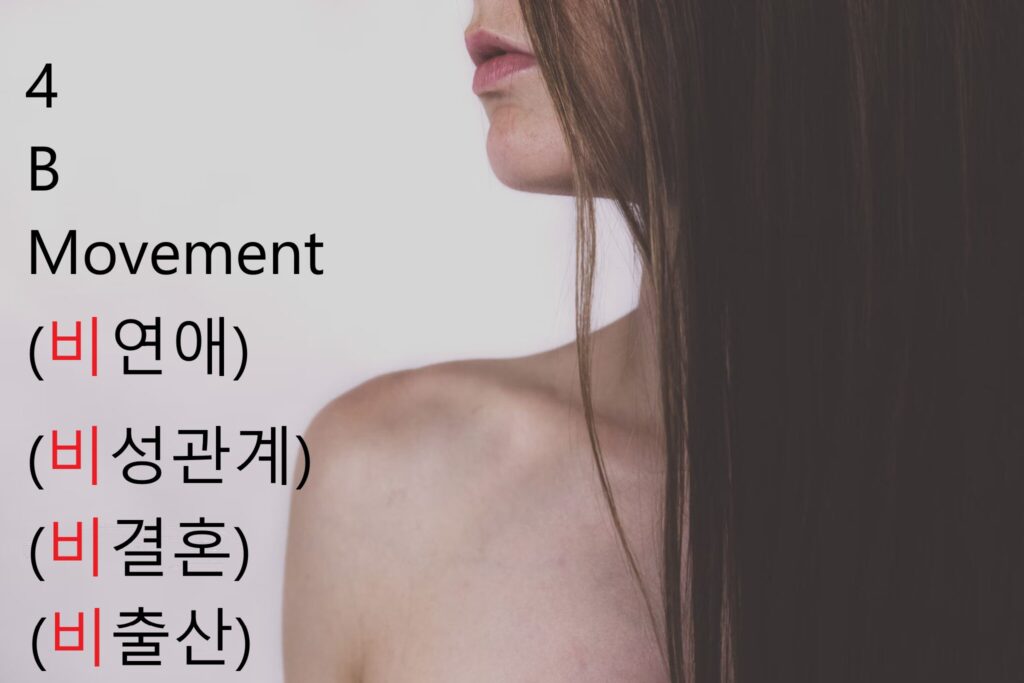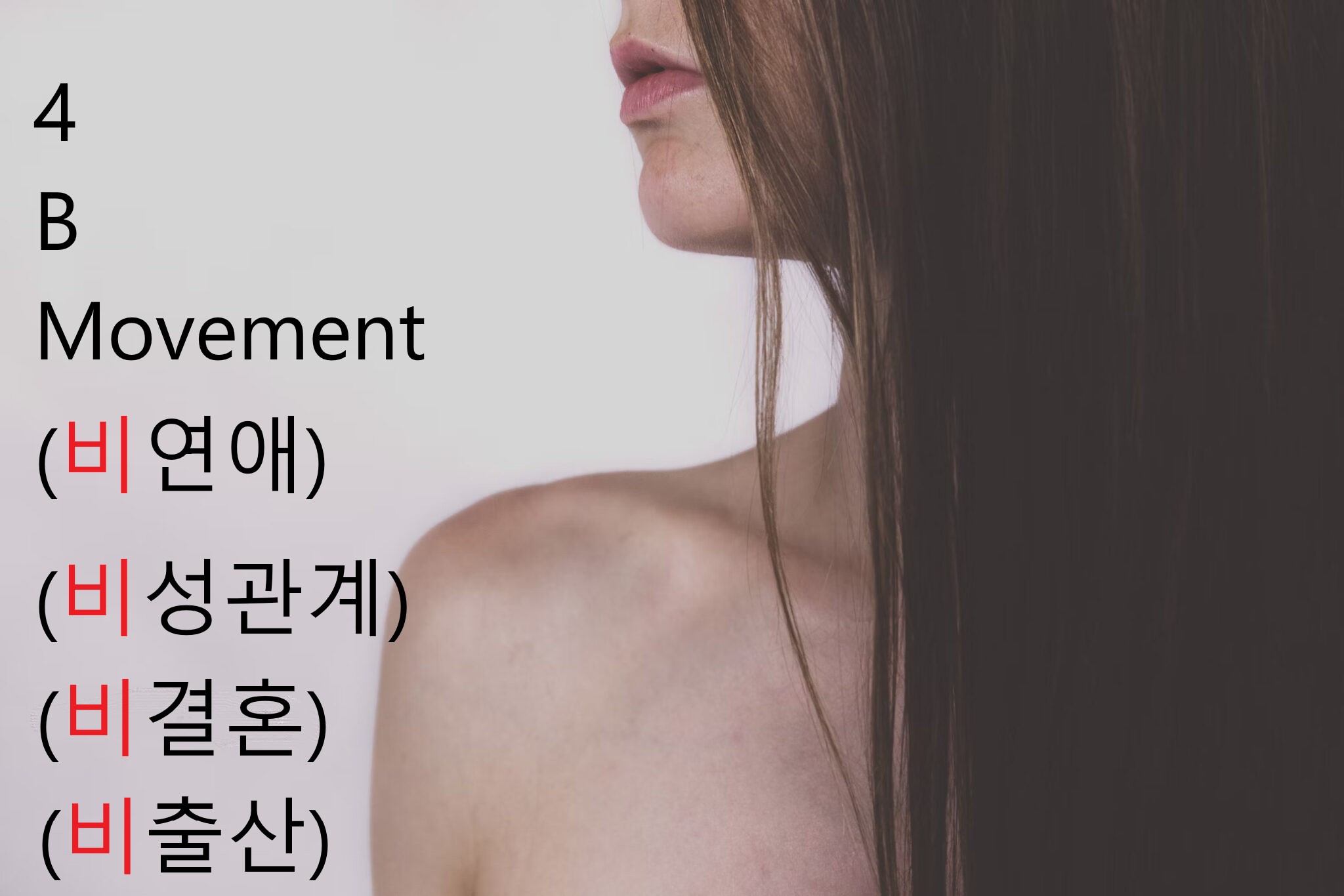The 4B movement, originating in South Korea, has garnered significant attention and spurred debate both domestically and internationally. Emerging as a response to various socio-cultural and economic pressures, the movement challenges traditional norms and promotes a new paradigm for women. This detailed exploration delves into the origins, development, and current status of the 4B movement, illuminating its profound impact on South Korean society.
Origins of the 4B Movement
The 4B movement, which stands for four “No’s” (No Dating (비연애), No Sex (비성관계), No Marriage (비결혼), and No Childbirth (비출산)), began as a grassroots response to the increasing disenchantment of women with traditional gender roles and societal expectations. The movement can be traced back to the early 2010s, a period marked by a growing awareness of gender inequality, pervasive misogyny, and economic challenges faced by women.
Several factors contributed to the rise of the 4B movement:
Economic Pressures: The high cost of living, particularly in urban areas like Seoul, combined with stagnating wages and job insecurity, made the traditional expectations of marriage and child-rearing increasingly untenable for many women.
Gender Inequality: Despite South Korea’s rapid economic development, gender inequality persisted in various forms, including wage gaps, glass ceilings in corporate sectors, and societal expectations that placed disproportionate burdens on women.
Misogyny and Discrimination: The movement was also a reaction against pervasive misogyny and gender-based violence. High-profile cases of sexual harassment and assault, as well as the global #MeToo movement, brought these issues to the forefront of public consciousness.
The 4B movement began to coalesce through online communities and social media platforms, where women shared their frustrations and aspirations. These platforms provided a space for solidarity and collective action, fostering a sense of community among like-minded individuals.
Key phases in the development of the 4B movement include:
Formation of Online Communities: Platforms like Twitter, Facebook, and various Korean forums became hubs for discussing the challenges faced by women. These discussions often highlighted the disconnect between traditional expectations and contemporary realities.
Public Discourse and Activism: As the movement gained traction, it started to manifest in public discourse and activism. Women began organizing events, protests, and campaigns to raise awareness about gender inequality and promote the principles of the 4B movement.
Literature and Media: The movement inspired a wave of literature, blogs, and media productions that explored themes of gender, autonomy, and resistance. Books and articles by feminist authors became popular, further disseminating the ideas of the 4B movement.
Institutional Responses: The growing influence of the 4B movement prompted responses from various institutions. While some traditionalists criticized the movement as undermining societal values, progressive groups and policymakers began to acknowledge and address the issues raised by 4B advocates.
The 4B Movement Today
Today, the 4B movement remains a vibrant and influential force in South Korean society. It continues to evolve, addressing new challenges and adapting to changing circumstances.
Expanded Reach: The movement has expanded beyond its initial urban base, reaching women in rural areas and different socio-economic backgrounds. This broader appeal reflects the universal nature of the issues it addresses.
Intersectionality: The movement has increasingly embraced an intersectional approach, recognizing that women’s experiences are shaped by multiple factors, including class, race, and sexual orientation. This inclusivity has strengthened the movement’s relevance and impact.
Cultural Influence: The principles of the 4B movement have permeated popular culture, influencing everything from fashion and entertainment to public policy. Celebrities and influencers have openly supported the movement, bringing its message to a wider audience.
Policy Changes: The movement’s pressure has led to tangible policy changes aimed at promoting gender equality. These include workplace reforms, anti-discrimination laws, and initiatives to support single and child-free women.
Global Connections: The 4B movement has inspired similar initiatives in other countries, fostering a global dialogue about gender, autonomy, and societal expectations. International collaborations and exchanges have enriched the movement’s perspectives and strategies.

Challenges and Future Directions
Despite its successes, the 4B movement faces several challenges:
Backlash and Misrepresentation: The movement has faced backlash from conservative groups who see it as a threat to traditional values. Misrepresentation in the media has also been an issue, with some outlets portraying the movement as radical or anti-family.
Sustainability: Ensuring the sustainability of the movement requires ongoing engagement, resource allocation, and adaptation to new challenges. Maintaining momentum and unity among diverse participants is a continual effort.
Balancing Autonomy and Solidarity: The movement strives to balance individual autonomy with collective solidarity. Navigating differing opinions and priorities within the movement is a delicate task that requires careful coordination and dialogue.
In conclusion, the 4B movement in South Korea is a powerful testament to the capacity of grassroots activism to challenge entrenched norms and advocate for change. As it continues to evolve, it remains a beacon of hope and inspiration for those seeking a more equitable and just society. The movement’s journey from its origins to its current state reflects the resilience and determination of women to redefine their roles and assert their autonomy in the face of adversity.




This is really just antimen bs.